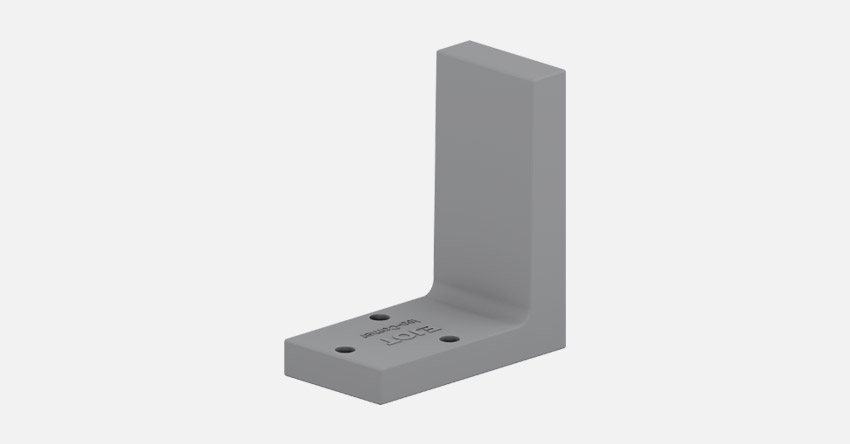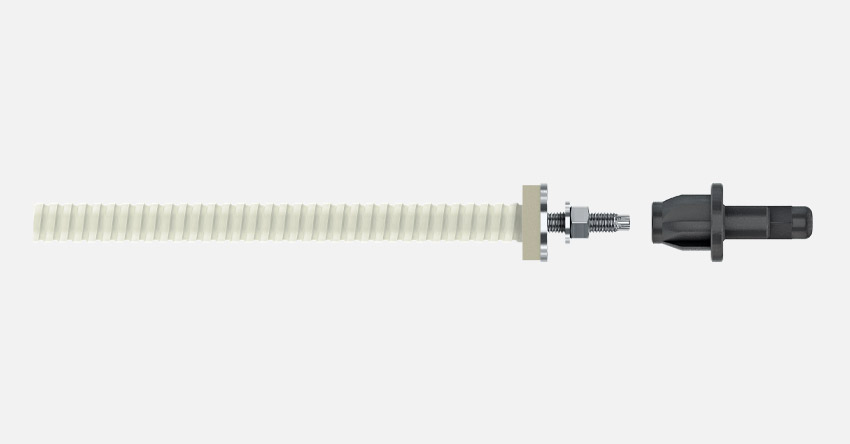Heavy and safety-relevant attachments
ETICS Expert Tip – Part 4
Heavy and safety-relevant attachments – What to keep in mind
Building facades have to support a variety of attachments, such as awnings, marquees, railings, lamps, letterboxes etc. ETICS facades hold special challenges when it comes to fastening.As a rule, the different attachment parts are divided into the following groups:
- lightweight
- medium heavy
- heavy and
- safety-relevant attachments.
This Expert Tip explains the requirements for fastening heavy and/or safety-relevant attachments to ETICS facades. For tips on installing light to medium heavy attachments on insulated facades, see our previous article.
Heavy and/or safety-relevant attachments
Heavy attachments are those that have a net weight of ≥ 15 kg. They are statically relevant for the building and the facade construction. This applies, for example, to railings, awnings and marquees.A safety-relevant attachment is anything that poses a risk to life and limb in the event of breakdown, e.g. lanyard rails, handrails, etc. Safety-relevant attachments may also be lighter than 15 kg. A good example is a lanyard rail made of aluminium, the net weight of which does not exceed 15 kg, but which would pose a great danger in the case of failure, e.g. if it is not fastened properly.
Special attention must therefore be given to ensure that both heavy and safety-relevant attachments are correctly and securely fastened.
Both the stainless steel French balcony (left) and the marquee (right) exceed 15 kg and pose a danger in the case of failure. Both objects are examples of heavy and safety-relevant attachments.
What is important when fastening?
First and foremost: heavy attachments must always be fastened to the substrate and require an approved fastening element. The products can be evaluated according to the requirements and the corresponding statics be calculated only with approval from building authorities. It is also not only the correct mounting element that plays a role, but also the appropriate fastening of the mounting element to the substrate. It is important that the loads of the attachment are not only transferred into the corresponding mounting element, but also into the substrate via the respective fastening.This requirement as well as the specific classification of the attachments are described in detail in the instruction sheet "Secure fastening of attachments to ETICS" from the Verband für Dämmsysteme, Putz und Mörtel e.V (the German Association for Insulation Systems, Plaster and Mortar, VDPM).
It is important that the mounting element can safely and sustainably absorb and transfer the acting loads.
Acting loads
The loads acting on the mounting element/fastening system essentially stem from the following three factors:- 1. Net weight of the attachment
It is also important to account for the loads from additional objects, such as a flower box added to the actual attachment (railing). This has a long-term or lasting effect on the net weight.
- 2. Working load
While the net weight only acts vertically, working loads can act both vertically and horizontally, e.g. with a leaning or impact load on a French balcony. This is also referred to as direction of load. It is important to allow for all directions of load in the design, if applicable. These loads are typically variable or short-term loads.
- 3. Weather-related effects
These are, for example, snow and ice which temporarily alter the weight of the attachment.
Loads acting on the attachment are essentially the net weight of the attachment itself (1), working loads (2) and weather-related effects (3).
Only when all factors have been taken into account can a detailed product selection of the required mounting element be made and, with the relevant data from the approval, static dimensioning be carried out.
In the scope of 360° service, EJOT offers pre-dimensioning tailored to the respective application for the approved products Iso-Corner, Iso-Bar and Iso-Bar ECO from the "mounting elements for attachments" range. With pre-dimensioning, you receive certification of the load-carrying capacity based on pre-planning and a portfolio overview/bill of materials as a rough overview for the preparation of offers.
In the scope of 360° service, EJOT offers pre-dimensioning tailored to the respective application for the approved products Iso-Corner, Iso-Bar and Iso-Bar ECO from the "mounting elements for attachments" range. With pre-dimensioning, you receive certification of the load-carrying capacity based on pre-planning and a portfolio overview/bill of materials as a rough overview for the preparation of offers.





